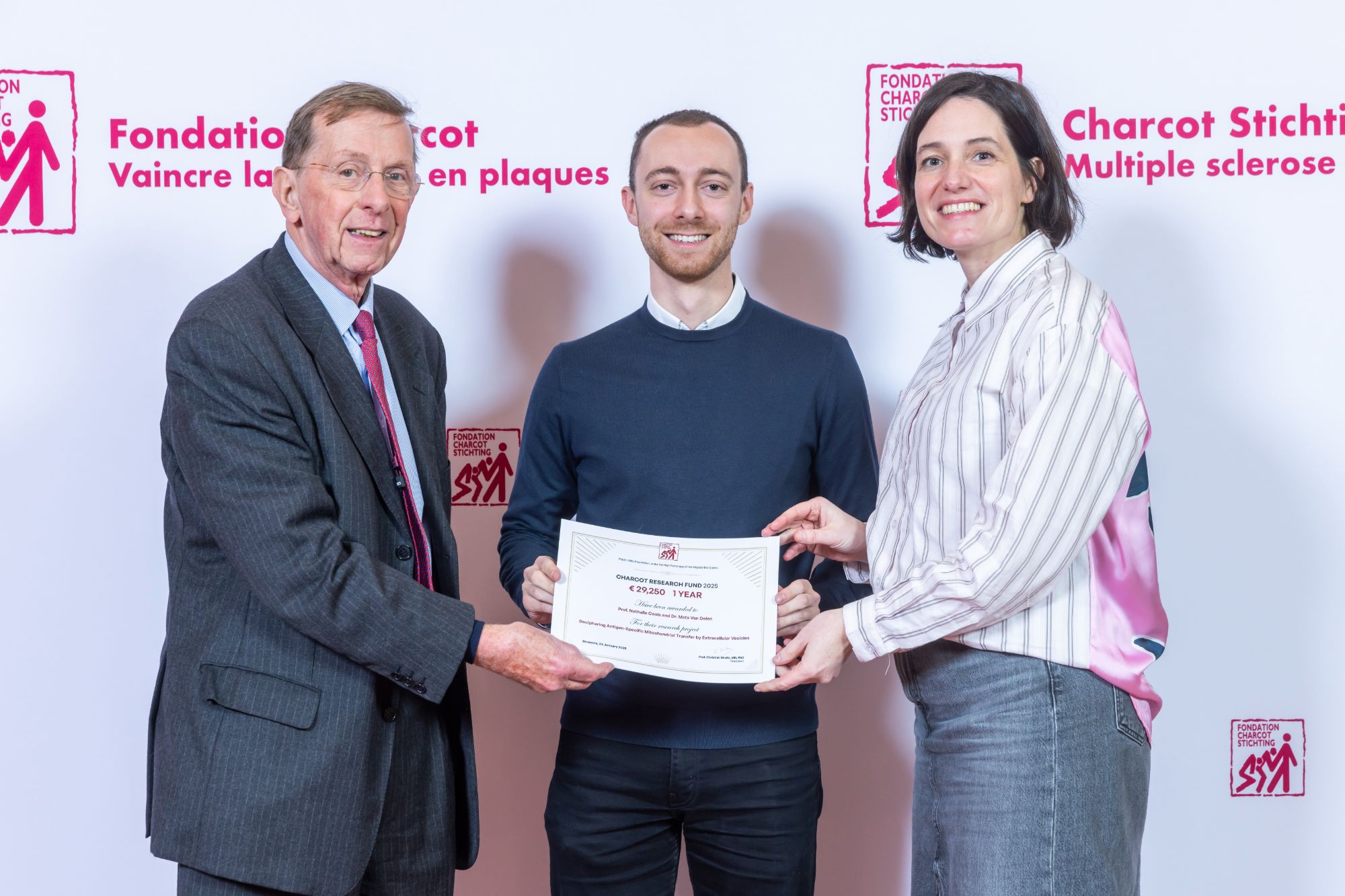We offer two summaries to allow everyone – patient, loved one, caregiver, or researcher – to understand the key issues of this research, each at their own level.
Science is at its best when it is open to all.
For everyone – Summary in plain language
Harnessing Cell Particles to Combat MS
This research focuses on tiny particles naturally released by cells that help control the immune system.
These particles can reduce harmful inflammation, and researchers are studying how parts of the cell’s energy source, the mitochondria, play a role in this process.
The goal is to understand how these particles work in multiple sclerosis (MS) and explore new ways to treat the disease.
For specialists – Scientific summary
Deciphering Antigen-Specific Mitochondrial Transfer by Extracellular Vesicles
Our research focuses on tiny particles called extracellular vesicles (EVs), which are naturally released by cells and play a role in regulating the immune system.
With previous support from the Charcot Foundation, we discovered that EVs produced by certain protective immune cells can help reduce harmful inflammation.
These vesicles act like messengers, carrying proteins and genetic material that influence how immune cells behave, often in ways that promote health. Interestingly, parts of mitochondria—often called the “powerhouses of the cell”—might also be involved in how EVs support immune tolerance, though we don’t yet fully understand this connection.
With further support from the Charcot Foundation, we aim to uncover how mitochondrial components affect EV function and explore how these vesicles work specifically in the context of multiple sclerosis (MS).
